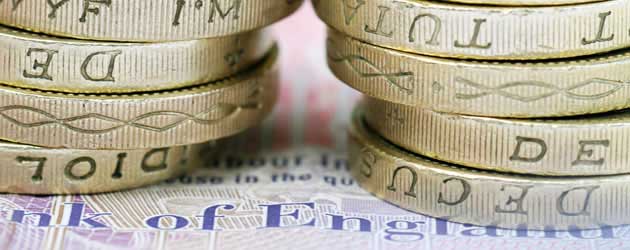
Sterling tumbled by around a quarter of a cent against the US Dollar to 1.5488 (GBP/USD) earlier this morning as Asian traders punished the Pound for Friday’s surprisingly weak UK Retail Sales print.
UK Retail Sales were forecast to improve by 0.5% in January, but the official figure from the Office for National Statistics showed a worrying decline of -0.6%. Food Sales were particularly disappointing, falling by -1.6% as smaller shops and grocers were forced to shutdown due to the heavy snowfall. Many had wished for a White Christmas but the White New Year proved damaging for the UK economy.
The softer-than-expected Retail Sales report reminded traders of the many weaknesses in the UK economy, and re-ignited fears that Britain could slip into an unprecedented triple-dip recession in the first quarter of 2013.
When the figure was announced on Friday morning the Pound sunk by -0.5 cents against the US Dollar (GBP/USD), -0.3 cents against the Euro (GBP/EUR), -0.4 cents against the Australian Dollar (GBP/AUD), -0.3 cents against the Canadian Dollar (GBP/CAD), and -0.4 cents against the New Zealand Dollar (GBP/NZD).
Sterling’s descent against the US Dollar halted temporarily earlier this morning in response to new housing data from Rightmove. Following January’s 2.4% improvement, the Rightmove UK House Price Index grew by 2.8% in February as home sellers raised their asking prices to the highest level in five years.
The average price sought by sellers reached £235,741 in February, according to the latest report, reflecting the busiest New Year in the housing market since the credit crunch.
However, the broader outlook for the UK economy, and in turn the Sterling currency, is a lot less rosy. Inflation is running at an annualized rate of 2.7% – much higher than the Bank of England’s self-imposed target of 2.0% – and with wage growth slowing to a 21-month low of just 0.4% in Q4, household purchasing power is diminishing, as evidenced by last month’s soft Retail Sales result.
Traders are also wary of a potential credit rating downgrade as the British government consistently fails to meet its fiscal consolidation targets. Furthermore, the Bank of England’s quarterly Inflation Report, released last week, showed a greater proclivity towards further monetary easing and this is also weighing on the Pound as we enter a new week of trading.
Technically speaking, the Pound to US Dollar exchange rate is likely to find resistance at 1.5549, but is more likely to slide towards support at 1.5371.

Comments are closed.